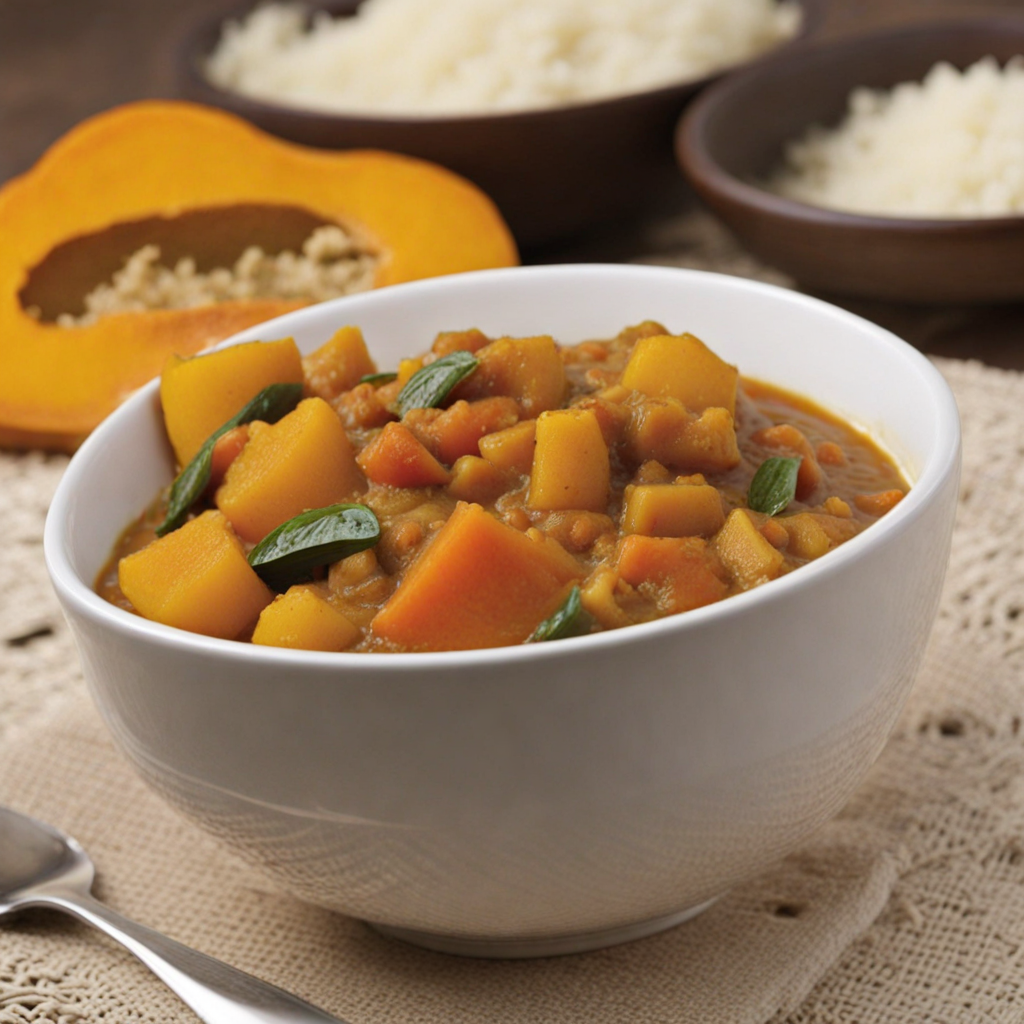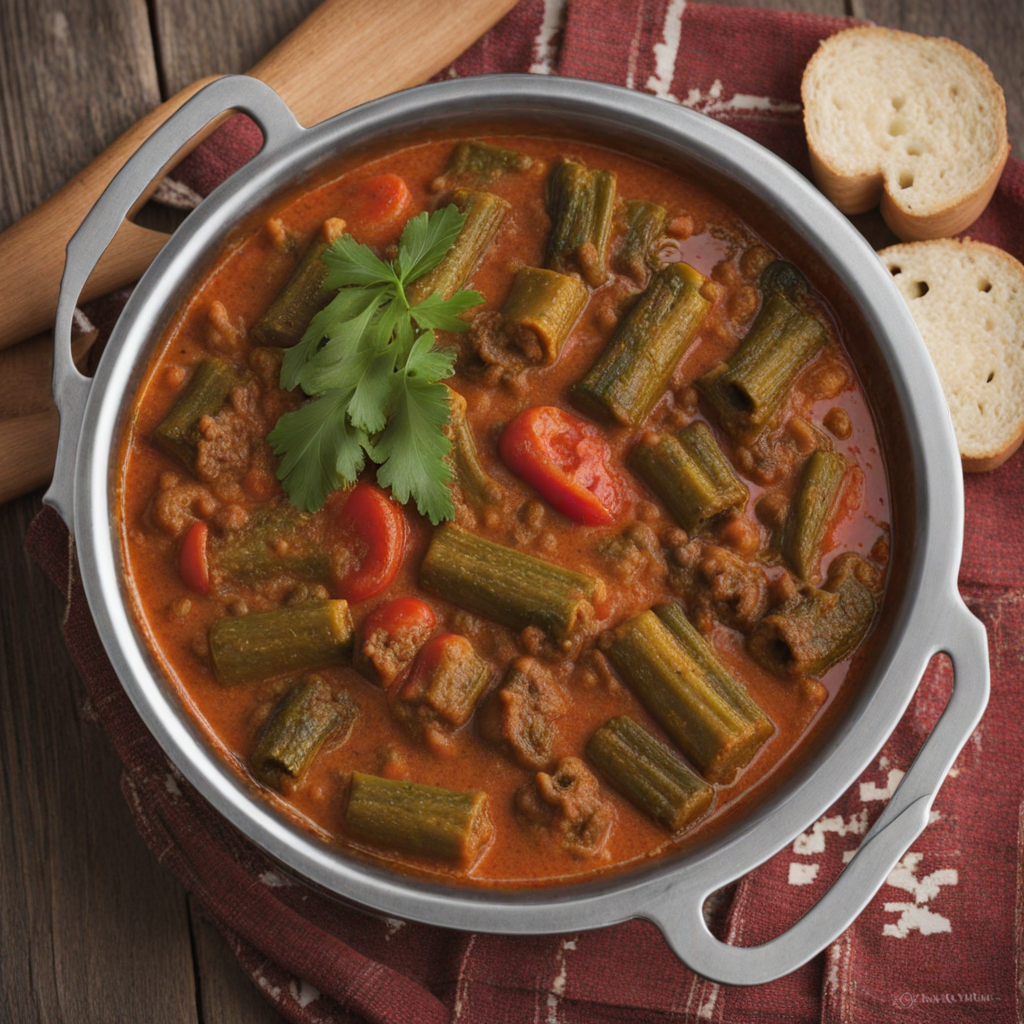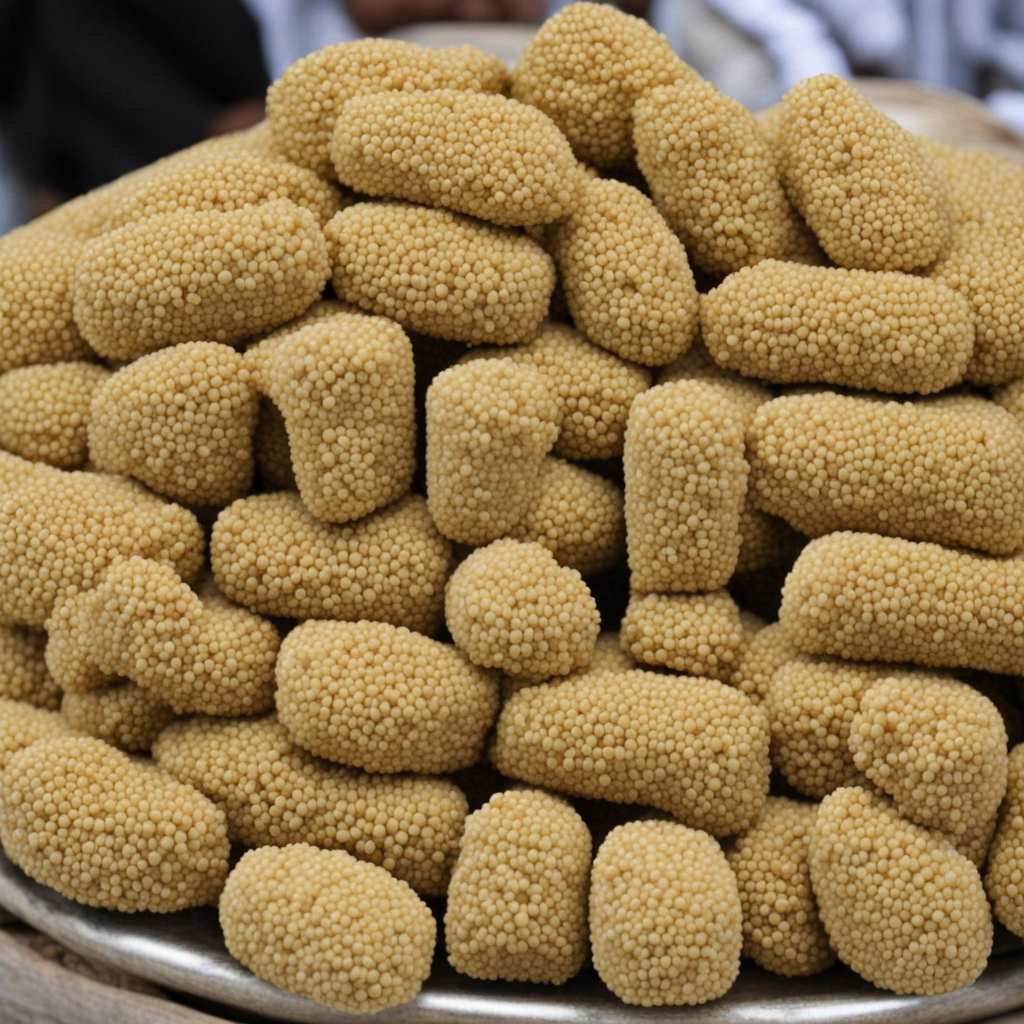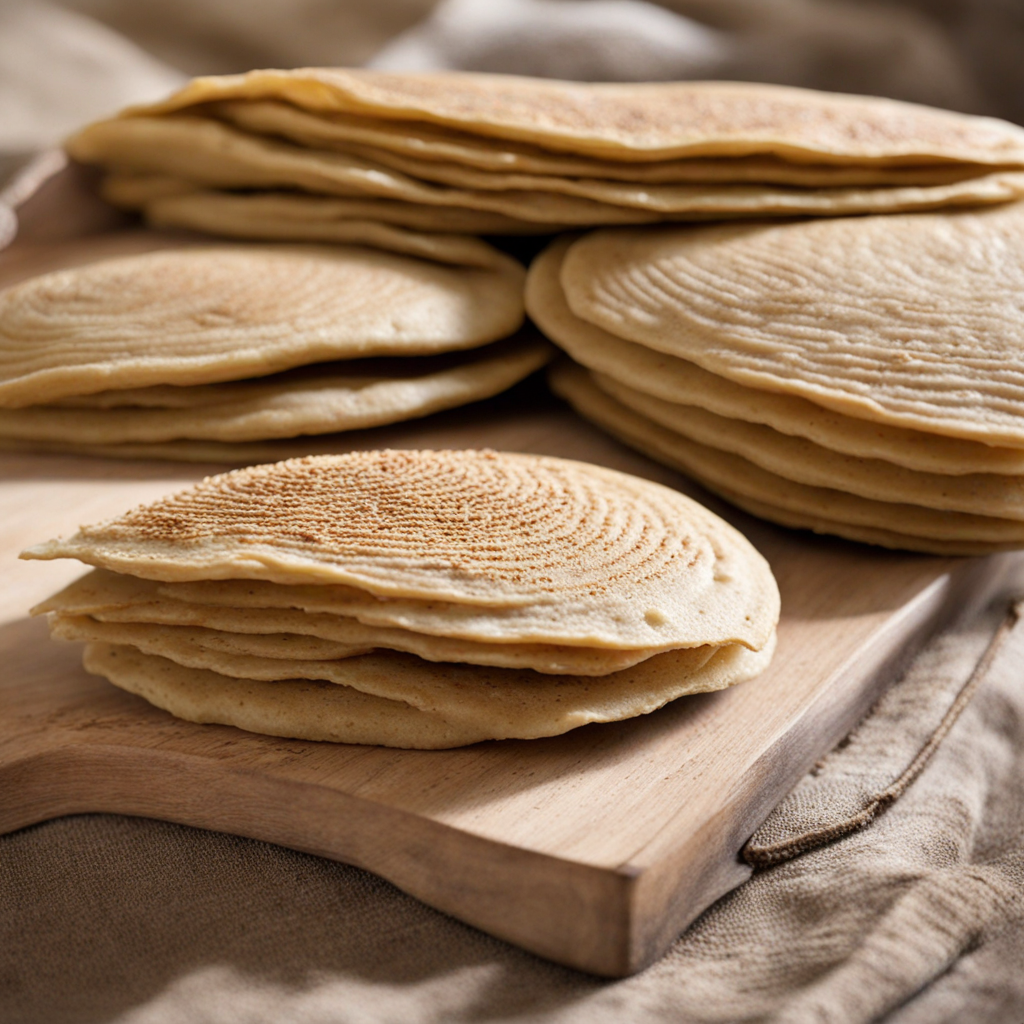Squash Stew
Squash Stew, a beloved dish from Chad, is a hearty and flavorful meal that beautifully showcases the country's agricultural bounty. The dish primarily features vibrant varieties of squash, which are often harvested fresh from local farms. The squash is typically cooked down until tender, allowing its natural sweetness to meld with a medley of spices. The use of traditional Chadian spices, such as cumin, coriander, and chili pepper, adds warmth and depth to the stew, creating a comforting dish that is perfect for sharing with family and friends. In addition to squash, this stew commonly includes an array of vegetables such as tomatoes, onions, and bell peppers, all of which contribute to a rich and robust flavor profile. Some variations may incorporate legumes or meats, offering a delightful mix of textures and tastes. The ingredients are simmered together, allowing the flavors to develop and harmonize, resulting in a dish that is both nourishing and satisfying. Squash Stew is often served with a side of rice or flatbreads, making it a complete meal that is both filling and delicious. Its vibrant colors and aromatic spices make it an appealing choice for those looking to explore new culinary experiences. Enjoying this dish offers not just a taste of Chad's diverse cuisine, but also a glimpse into the warmth and hospitality of its culture, making it a must-try for adventurous food lovers.
How It Became This Dish
## The History of 'يخنة القرع' (Pumpkin Stew) from Chad Introduction In the heart of Central Africa lies Chad, a country rich in cultural diversity and culinary traditions. Among the myriad of dishes that reflect the country's heritage, 'يخنة القرع' (pronounced Yakhna al-Qara, or pumpkin stew) stands out as a staple that encapsulates the agricultural bounty and the communal spirit of Chadian society. This dish not only nourishes the body but also serves as a cultural touchstone that connects generations and embodies the spirit of togetherness. Origins The origins of 'يخنة القرع' can be traced back to the various ethnic groups that inhabit Chad, including the Sara, Arabic, and more than 100 other ethnic communities. Agriculture has been a cornerstone of Chadian life for centuries, with crops such as millet, sorghum, and of course, pumpkin forming the backbone of the local diet. Pumpkins are particularly favored for their versatility; they can be stored for long periods and prepared in numerous ways, making them a practical choice for families. The cultivation of pumpkins in Chad is believed to have been influenced by the introduction of this crop from the Americas in the 16th century. As European explorers returned with new crops, local farmers adapted these ingredients to their culinary practices, resulting in a fusion of flavors and techniques. The simple yet hearty nature of 'يخنة القرع' reflects the resourcefulness of Chadians in utilizing locally available ingredients. Cultural Significance 'يخنة القرع' is more than just a dish; it is a symbol of hospitality and community. In Chadian culture, food is often shared during gatherings, celebrations, and rituals. The preparation of 'يخنة القرع' typically involves a communal effort, where family members and friends come together to chop vegetables, stir the pot, and share stories. This collaboration fosters a sense of unity, reinforcing the bonds between individuals and families. In many Chadian communities, meals are often accompanied by songs, dances, and storytelling. The act of sharing 'يخنة القرع' during these occasions serves to strengthen cultural identity and keep traditions alive. The dish is often prepared during special events such as weddings, harvest festivals, and religious celebrations, showcasing its significance in the social fabric of Chadian life. Ingredients and Preparation The beauty of 'يخنة القرع' lies in its simplicity and adaptability. Traditionally, the dish consists of pumpkin as the primary ingredient, complemented by a variety of vegetables such as onions, tomatoes, and sometimes leafy greens. Some families add spices like garlic, ginger, and chili to enhance the flavor, while others may incorporate meat or fish, depending on regional availability and personal preference. The preparation of 'يخنة القرع' typically begins with peeling and chopping the pumpkin, which is then sautéed with onions and tomatoes in a large pot. Water is added to create a rich stew-like consistency, and the mixture is left to simmer until the pumpkin is tender. The dish can be served alone or accompanied by rice, couscous, or bread, making it a filling and nutritious meal. Development Over Time Over the years, 'يخنة القرع' has evolved, reflecting changes in Chadian society, agriculture, and culinary trends. In the past, the dish was primarily prepared using traditional methods, relying on open fires and clay pots. However, with the advent of modern cooking appliances and techniques, the preparation has become more accessible, allowing for greater experimentation with flavors and ingredients. The globalization of food culture has also influenced 'يخنة القرع.' As Chadian communities have migrated and spread across the globe, they have taken their culinary traditions with them. This has led to the introduction of 'يخنة القرع' in international food markets and restaurants, where it is often reinterpreted to cater to diverse palates. Chefs in the diaspora have blended traditional flavors with contemporary cooking styles, creating a unique fusion that retains the essence of the original dish while appealing to a broader audience. Moreover, the growing interest in plant-based diets and organic farming has sparked renewed appreciation for traditional dishes like 'يخنة القرع.' As more people seek to understand the origins of their food and embrace sustainable practices, this Chadian stew has found its place in the hearts of health-conscious consumers worldwide. The emphasis on fresh, locally sourced ingredients resonates with contemporary culinary movements, enhancing the dish's relevance and popularity. Challenges and Resilience Despite its rich history and cultural significance, 'يخنة القرع' and other traditional dishes face challenges in the modern world. Climate change, economic instability, and the encroachment of industrial agriculture threaten the availability of traditional crops. As farmers struggle to adapt to changing weather patterns, the future of sustainable agricultural practices hangs in the balance. However, the resilience of Chadian communities is evident in their commitment to preserving their culinary heritage. Local organizations and initiatives are working to promote traditional farming practices and raise awareness about the importance of biodiversity in agriculture. Efforts are also being made to document and share traditional recipes, ensuring that future generations can continue to enjoy and appreciate 'يخنة القرع.' Conclusion 'يخنة القرع' is a dish that transcends mere sustenance; it is a living testament to the cultural identity and communal spirit of Chad. Rooted in tradition yet adaptable to the modern world, this pumpkin stew embodies the resilience and creativity of Chadian people. As it continues to evolve and gain recognition beyond its borders, 'يخنة القرع' serves as a delicious reminder of the importance of preserving culinary heritage while embracing the future. Whether enjoyed at a family gathering or served in a restaurant halfway around the world, this dish remains a symbol of connection, nourishment, and the rich tapestry of Chadian life.
You may like
Discover local flavors from Chad







